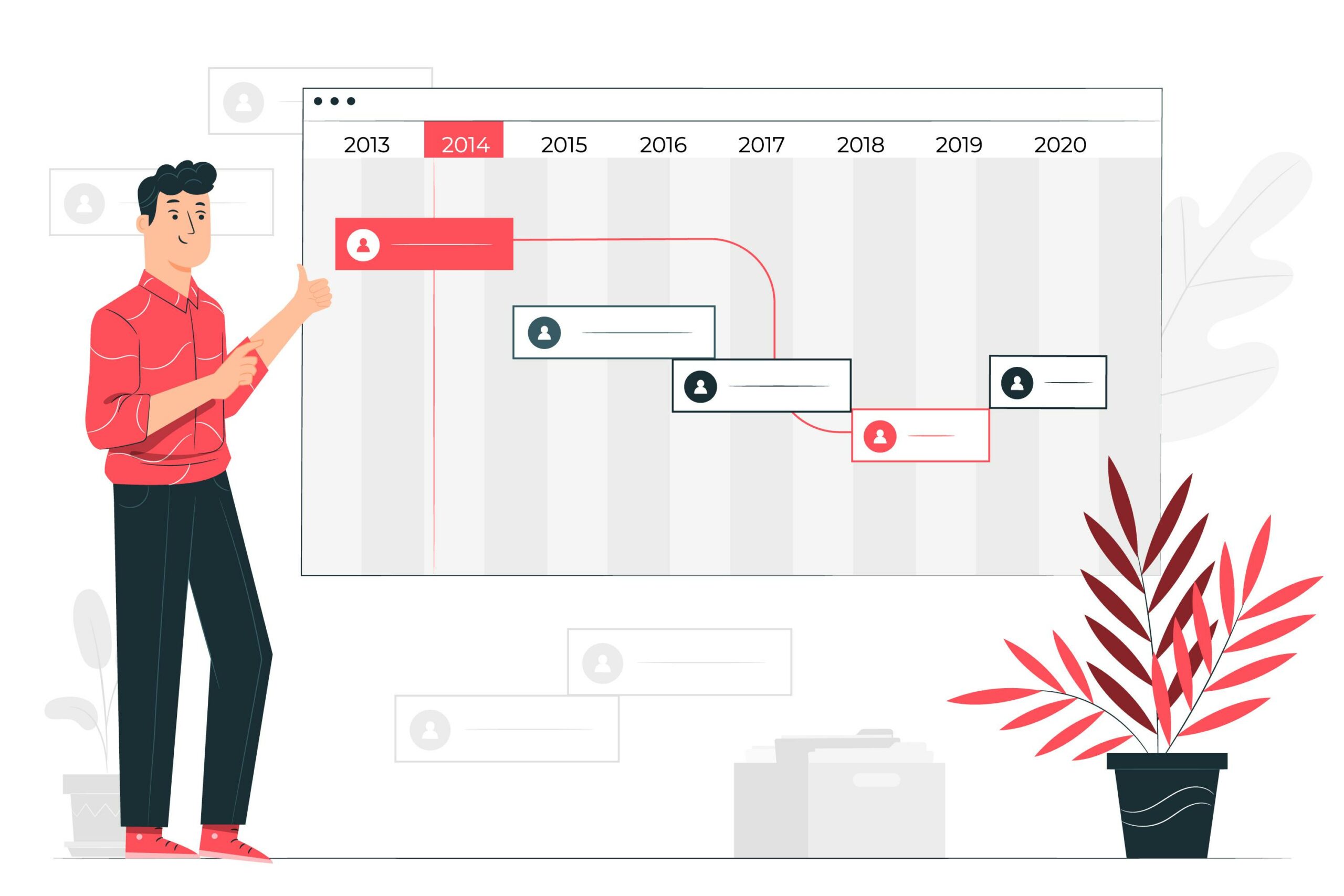Forecasting focuses on predicting future events, planning focuses on strategizing and decision-making based on those predictions. Forecasting tends to have a shorter time horizon, often centered around short-term trends, while planning encompasses both short-term and long-term goals.
What is Forecasting?

Forecasting, as the name suggests, involves predicting future outcomes, trends, and events based on historical data and statistical models. It serves as an invaluable tool for businesses to anticipate customer demand, market trends, and financial performance. There are various methods of forecasting, such as qualitative methods (expert opinions and market research) and quantitative methods (time series analysis and regression models). Forecasting helps businesses make informed decisions, allocate resources efficiently, and identify potential risks and opportunities. However, it also has limitations, as it relies on assumptions and historical data that may not accurately reflect future circumstances.
Types of Forecasting Methods
- Qualitative methods involve expert opinions, historical data analysis, and market research to make subjective judgments and predictions. Examples include Delphi method, market research, and historical analogy.
- Quantitative methods use mathematical and statistical models to analyze historical data and project future trends. Examples include time series analysis, regression analysis, and econometric models.
- Causal methods look at cause-and-effect relationships between variables to forecast future outcomes. Examples include regression analysis, input-output analysis, and system dynamics models.
- Time series methods analyze patterns and trends in historical data to make future predictions. Examples include moving averages, exponential smoothing, and ARIMA models.
- Survey methods involve collecting data from a sample population through surveys and using statistical techniques to make forecasts. Examples include customer surveys, employee surveys, and market research surveys.
Pro-tip: When choosing a forecasting method, consider the availability of data, the level of accuracy required, and the nature of the forecasted variable. Using a combination of different methods can also improve the accuracy and reliability of forecasts.
Importance of Forecasting in Business
Forecasting plays a crucial role in the success of a business. The importance of forecasting in business cannot be overstated as it allows companies to make informed decisions based on future projections and trends. By analyzing historical data, market conditions, and customer behavior, businesses can estimate future demand for their products or services. This knowledge enables them to plan their production, inventory, and marketing strategies effectively.
The importance of forecasting in business cannot be overstated. It provides several benefits including:
- Financial Planning: Forecasting helps businesses create accurate budgets and financial plans by estimating future revenues and expenses. This allows companies to allocate resources efficiently and identify potential financial risks or opportunities.
- Inventory Management: Accurate forecasting helps companies optimize their inventory levels and avoid stockouts or excess inventory. By predicting demand fluctuations, businesses can ensure they have the right amount of stock available to meet customer demand, avoiding costly disruptions in their supply chain.
- Production Planning: Forecasting helps companies plan their production schedules, ensuring they have enough resources and capacity to meet future demand. It also minimizes waste and reduces production costs by aligning production levels with projected sales.
- Marketing Strategy: Forecasting assists in developing effective marketing campaigns and strategies. By understanding future demand, businesses can target their marketing efforts towards specific customer segments and allocate their resources efficiently.
- Decision Making: Forecasting provides essential data for decision making. It helps businesses identify new opportunities, assess the feasibility of potential projects, and evaluate the impact of different scenarios on their operations.
The importance of forecasting in business cannot be overstated. It enables organizations to plan effectively, optimize their resources, and make informed decisions. By incorporating forecasting into their strategic processes, businesses can gain a competitive edge and ensure long-term success.
What is Planning?

planning is a systematic approach to setting goals, defining strategies, and outlining actions to achieve those goals. It involves analyzing the current situation, formulating objectives, and developing strategies and tactics to accomplish those objectives. Planning can be classified into different types such as strategic planning, operational planning, and contingency planning. Planning helps businesses align their activities, allocate resources effectively, and establish a roadmap for success. However, planning is subject to limitations as well, such as the inability to predict unforeseen events and changes in the external environment.
Types of Planning
When it comes to planning in a business setting, there are different types of planning that can be implemented to ensure successful operations and achieve organizational goals.
- Strategic Planning: When it comes to Types of Planning, one important type is strategic planning. This particular type focuses on defining the long-term goals and objectives of the company. It involves analyzing the competitive landscape, market trends, and internal capabilities to develop strategies that will guide the organization’s direction.
- Operational Planning: Another crucial type of planning is operational planning. This type is concerned with short-term goals and actions that support the overall strategic plan. It involves creating detailed plans for specific tasks or projects, allocating resources, and setting timelines to ensure efficient execution.
- Financial Planning: Financial planning is also a significant aspect of Types of Planning. It involves managing the organization’s financial resources effectively. This includes creating budgets, forecasting revenues and expenses, and analyzing financial data to make informed decisions.
- Contingency Planning: Contingency planning is another important type of planning that businesses must consider. This type focuses on preparing for unexpected events or crises that could impact the business. It involves identifying potential risks, developing response plans, and establishing protocols to minimize disruption and ensure business continuity.
- Human Resource Planning: Last but not least, human resource planning plays a critical role in Types of Planning. It involves assessing the current and future workforce needs of the organization. This includes activities such as recruitment, training, performance management, and succession planning to ensure that the right people are in the right positions to support the business objectives.
By implementing these different types of planning, businesses can effectively navigate challenges, optimize resources, and achieve their desired outcomes.
Importance of Planning in Business
Planning plays a vital role in the success of a business. It is of utmost importance as it helps in setting goals and objectives, allocating resources effectively, and determining the actions required to achieve them. Here are some compelling reasons why planning holds such significance in the business world:
- Goal Setting: Planning enables businesses to define clear and specific goals. It provides direction and purpose, ensuring that every action taken is in alignment with the overall objectives. This clarity enables businesses to concentrate their efforts and work towards achieving their desired outcomes.
- Resource Management: Effective planning involves identifying and allocating resources necessary for accomplishing the goals. It aids in efficiently managing finances, manpower, and materials. By engaging in proper planning, businesses can optimize their resources and minimize wastage.
- Risk Management: Planning empowers businesses to anticipate potential risks and develop strategies to mitigate them. By analyzing various scenarios and evaluating potential challenges, businesses can take proactive measures to minimize risks and ensure uninterrupted operations.
- Decision Making: Planning forms a strong foundation for making informed decisions. By evaluating different options and conducting thorough analysis, businesses can make optimal decisions that align with their long-term objectives.
- Adaptation to Change: Planning allows businesses to be flexible and adapt to changing market conditions. It enables them to identify trends and make necessary adjustments, ensuring their competitiveness and seizing opportunities for growth.
Planning plays a crucial role in the success of a business. It provides a roadmap for achieving goals, optimizes resource allocation, mitigates risks, supports decision making, and enables businesses to adapt to changing circumstances. It should be prioritized by all businesses as an integral part of strategic management.
Here are some suggestions to enhance the planning process:
- Create a comprehensive business plan that outlines goals, strategies, and timelines.
- Regularly review and update your plans to reflect dynamic market conditions.
- Engage key stakeholders in the planning process to ensure a holistic evaluation of business objectives.
- Incorporate feedback from employees and customers to refine your plans and maintain relevance in the market.
Benefits and Limitations of Planning
- Benefits of Planning:
- 1. Goal setting: Planning offers numerous benefits such as setting clear and achievable goals, providing a roadmap for success.
- 2. Resource allocation: Through effective planning, businesses can efficiently allocate their resources, ensuring they are used in the most productive manner.
- 3. Risk management: Planning allows businesses to identify potential risks and develop strategies to mitigate them, reducing the likelihood of negative outcomes.
- 4. Improved decision-making: Planning provides a structured approach to decision-making, enabling businesses to make informed choices based on careful analysis and consideration.
- 5. Enhanced coordination: Planning facilitates coordination among different departments and teams within a business, fostering effective communication and collaboration.
- Limitations of Planning:
- 1. Time-consuming: Planning can be a time-consuming process, requiring thorough analysis, research, and evaluation.
- 2. Rigidity: Excessive planning may lead to inflexibility, making it challenging for businesses to adapt to changing market conditions or unforeseen circumstances.
- 3. Uncertainty: Planning is based on assumptions and predictions about the future, which can be uncertain and subject to change, impacting the effectiveness of the plans.
- 4. Costly: Developing and implementing comprehensive plans can be costly, especially for small businesses with limited resources.
- 5. Overemphasis on detail: Excessive planning can lead to an excessive focus on minutiae, diverting attention from broader strategic goals and objectives.
While planning offers numerous benefits such as goal setting, resource allocation, risk management, improved decision-making, and enhanced coordination, it also has its limitations, including being time-consuming, rigid, uncertain, costly, and having the potential for overemphasis on detail. Therefore, businesses should carefully consider these factors and strike a balance between effective planning and flexibility to ensure long-term success.
Key Differences between Forecasting and Planning
When it comes to forecasting and planning, understanding the key differences is essential. In this section, we’ll explore the distinctions between these two vital processes. From the purpose and scope to the level of detail involved, we’ll dive into the various aspects that set forecasting apart from planning. Get ready to uncover how the time horizon, information and data used, as well as flexibility and adaptability, shape the approaches to these strategic activities. So, let’s dig in and decipher the nuances together!
1. Purpose and Scope
The purpose and scope of forecasting and planning are crucial for effective business management and decision-making.
- Forecasting helps businesses anticipate future trends, market conditions, and potential opportunities or risks. It involves predicting future events or outcomes based on historical data, market research, and statistical models. By analyzing trends and patterns, businesses can make informed decisions, allocate resources efficiently, and set realistic goals.
- Planning, on the other hand, involves setting objectives, outlining strategies, and developing action plans to achieve desired outcomes. It encompasses determining the steps, resources, and timelines required to accomplish specific goals or projects. Effective planning ensures that businesses have a roadmap to follow, improves coordination, and enhances decision-making.
- While forecasting focuses on predicting the future, planning focuses on taking concrete steps to achieve desired outcomes.
- The purpose of forecasting is to inform decision-making, minimize uncertainties, and enable businesses to adapt to changing market conditions effectively.
- The goal of planning is to ensure that businesses have a well-defined path to follow, align resources, and optimize performance.
- Both forecasting and planning help businesses identify potential risks and seize opportunities, but their scope and methods differ. Forecasting looks at future events and trends, while planning involves setting goals, defining strategies, and allocating resources accordingly.
Considering the importance and benefits of both forecasting and planning, businesses should implement these practices to enhance their strategic decision-making and improve overall performance.
2. Time Horizon
To understand the concept of time horizon in forecasting and planning, let’s compare the two using a table:
| Forecasting | Planning |
|---|---|
| Focuses on predicting future trends | Focuses on setting goals and determining actions to achieve them |
| Short, medium, and long-term forecasts | Short, medium, and long-term plans |
| Time horizon can range from days to years | Time horizon can range from days to years |
In forecasting, businesses analyze historical data and trends to make predictions about future demand, sales, or any other relevant factor. Depending on the specific purpose, forecasts can cover short-term (days or weeks), medium-term (months), or long-term (years) periods.
On the other hand, planning involves setting goals, establishing strategies, and outlining specific actions to achieve those goals. Similar to forecasting, planning can also have short, medium, or long-term horizons.
Both forecasting and planning require considering the time horizon in which they will be applied. By understanding the time horizon, businesses can make more accurate forecasts and create realistic plans that align with their goals.
The time horizon, whether in forecasting or planning, plays a crucial role in determining the scope of predictions or actions. It allows businesses to anticipate future trends and make informed decisions to achieve their objectives.
For more insights into forecasting, planning, and their key differences, continue reading the article to gain a deeper understanding of these essential business concepts.
3. Information and Data Used
| Information and Data Used | Data Used |
|---|---|
| Historical Data | Past sales figures, customer data, market trends |
| Market Research | Primary and secondary research on customer preferences, buying behavior, market size, competition |
| Internal Data | Financial statements, production data, inventory levels |
| External Data | Economic indicators, industry reports, government data |
| Expert Opinions | Insights and predictions from industry experts, consultants |
When it comes to forecasting and planning, gathering accurate information and using relevant data is crucial. The information and data used for these processes include historical data, market research findings, internal data, external data, and expert opinions. Historical data, such as past sales figures and customer data, provide insights into past trends and patterns. Market research involves collecting primary and secondary data on customer preferences, buying behavior, market size, and competition. Internal data, such as financial statements and production data, can help in assessing the company’s current performance. External data, including economic indicators and industry reports, provide a broader view of the market environment. Expert opinions from industry experts and consultants offer valuable insights and predictions.
To make effective forecasts and plans, businesses need to analyze and interpret these sources of information and data. Combining different data sets can provide a comprehensive understanding of the market, which can then be used to develop strategies and make informed business decisions. By utilizing accurate and relevant information and data, businesses can enhance their forecasting and planning processes and improve their chances of achieving success.
The information and data used in forecasting and planning come from various sources, including historical data, market research, internal and external data, and expert opinions. It is essential for businesses to gather and analyze these data sets to make informed decisions and improve their chances of success.
4. Flexibility and Adaptability
The sub-topic “Flexibility and Adaptability” discusses the key differences between forecasting and planning in terms of their ability to adapt to changing circumstances. Here are some important points to consider:
- Forecasting:
- Forecasts are based on historical data and trends, providing a predicted outcome for future events.
- Forecasts are often rigid and less adaptable to sudden changes or unforeseen circumstances.
- Forecasts rely on accurate and up-to-date data for accurate predictions.
- Flexibility in forecasting can be limited, as it is more focused on predicting and anticipating rather than responding to changes.
- Forecasting is essential for long-term planning and decision making.
- Planning:
- Planning involves the creation of strategies, goals, and action plans to achieve desired outcomes.
- Planning allows for adjustments and modifications to the plan in response to changing circumstances.
- Planning requires access to current information and data to make informed decisions.
- Flexibility and adaptability are crucial in planning, as it enables organizations to respond effectively to unexpected events and market dynamics.
- Planning helps businesses stay agile and responsive in a dynamic business environment.
A successful tech company adopted a flexible planning approach to adapt to market fluctuations. They regularly reviewed their plans and adjusted their strategies based on customer feedback and market changes. This flexibility allowed them to quickly seize new opportunities and overcome challenges, ensuring their continued growth and success.
5. Level of Detail
The level of detail is a critical aspect when comparing forecasting and planning in business. It determines the depth and specificity of the information considered in each process.
| Forecasting | Planning |
| Focuses on predicting future trends and outcomes based on historical data and statistical models. | Involves creating a roadmap or strategy to achieve specific goals and objectives. |
| Requires a detailed analysis of historical data, market trends, and external factors to make accurate predictions. | Considers the available resources, constraints, and potential risks to develop an action plan. |
| Granular level of detail is essential to identify patterns, forecast demand, and make informed decisions. | While it also uses data and analysis, planning focuses more on setting priorities, allocating resources, and defining milestones. |
| Uses quantitative techniques to forecast specific numerical values, such as sales volumes or financial performance. | May involve a mix of quantitative and qualitative factors to outline the steps and strategies needed to achieve desired outcomes. |
| Enables businesses to anticipate market fluctuations, optimize operations, and make informed decisions. | Guides organizations in aligning their actions with their long-term objectives, ensuring efficiency and effectiveness. |
The level of detail plays a vital role in both forecasting and planning. While forecasting demands a meticulous analysis of historical data and market trends to predict future outcomes, planning requires a granular level of detail to define specific objectives, allocate resources, and establish milestones. Understanding this distinction and applying the appropriate level of detail in each process is crucial for businesses to make accurate predictions, develop effective strategies, and achieve long-term success.
Historically, businesses that have paid attention to the level of detail in their forecasting and planning activities have gained a competitive advantage. By thoroughly analyzing data and considering various factors, they have been able to make more informed decisions and adapt their strategies to changing market conditions. This attention to detail has allowed them to optimize their operations, minimize risks, and stay ahead of their competitors.
Why Both Forecasting and Planning are Essential for Business Success
Both forecasting and planning play crucial roles in ensuring business success. Here’s why:
- Anticipating the Future: Forecasting helps businesses anticipate future trends, market conditions, and customer preferences. It involves analyzing historical data, market research, and industry trends to make informed predictions about future outcomes. This enables businesses to stay ahead of the curve and proactively plan for potential challenges and opportunities.
- Setting Goals and Objectives: Planning involves setting clear goals, objectives, and strategies to achieve them. It takes into account the insights gained from forecasting to develop a roadmap for success. Proper planning provides a structured framework for decision-making, resource allocation, and implementation of actions required to achieve desired outcomes.
- Optimizing Resource Allocation: Both forecasting and planning help businesses allocate resources effectively. Forecasting helps in estimating future demand, allowing businesses to plan their production, inventory, and staffing accordingly. Planning ensures that resources are allocated efficiently to support the organization’s goals and objectives.
- Risk Management: Forecasting helps businesses identify potential risks and uncertainties in the market. By understanding these risks, businesses can develop contingency plans and mitigation strategies as part of their planning process. This enables them to navigate uncertainties and minimize the impact of unforeseen events.
- Adaptability and Agility: Forecasting and planning provide businesses with the flexibility to adapt to changing market conditions. By regularly reviewing and updating forecasts and plans, businesses can respond quickly to emerging trends, customer demands, and competitive forces. This agility allows businesses to stay competitive and seize new opportunities.
- Performance Evaluation: Both forecasting and planning enable businesses to measure their performance against set goals and objectives. By comparing actual results with forecasted expectations, businesses can identify areas of improvement, make necessary adjustments to their plans, and enhance their overall performance.
- Communication and Alignment: Forecasting and planning facilitate communication and alignment within an organization. By sharing forecasts and plans with stakeholders, businesses can ensure that everyone is working towards a common vision. This alignment enhances collaboration, coordination, and accountability across different departments and teams.
While forecasting helps anticipate the future, planning translates those insights into actionable strategies. Together, they form a powerful combination that drives business success and enables organizations to navigate uncertainty, optimize resources, and achieve their goals.
Frequently Asked Questions
What is the difference between forecasting and planning?
Forecasting involves predicting future financial results based on assumptions and expectations, while planning involves creating a comprehensive document that outlines the financial direction and objectives of a business organization.
How are income projections different from financial forecasts?
Income projections focus on estimating future income based on factors such as past performance, consumer surveys, and commodity prices. Financial forecasts, on the other hand, involve predicting overall financial results, including revenue, expenses, and cash flow.
What is the role of financial planning in a company’s operational framework?
Financial planning serves as a strategic approach to guide the company’s future actions by providing an internally focused, comprehensive view of all aspects of the business. It considers factors such as supply chain management, fixed assets investment, and expense allowances to cover future expenses.
How does forecasting contribute to achieving revenue targets?
Forecasting helps inform business leaders about the likelihood of meeting revenue targets. It involves analyzing current market conditions, conducting qualitative and quantitative forecasting, and making adjustments to existing budgets or plans based on the results. It provides visibility into the company’s expected sales revenue and overall financial results driven by top-line revenue.
What are the advantages of financial planning over forecasting?
Financial planning allows for flexibility and creativity due to its long-term nature. It enables exploring various scenarios and aligning expectations with reality for revenue and expenses. On the other hand, forecasting relies on assumptions and can involve guesswork, making it less comprehensive and more focused in nature.
How does financial planning differ from planning for personal finances?
Financial planning in a business organization involves creating an operational framework, setting financial goals, and considering factors such as inventory requirements, fixed assets investment, and working capital. Planning for personal finances focuses on individual financial life, including budgeting, saving for retirement, and generating future income through investments or additional income sources.
Image Credits
Featured Image By – rawpixel.com on Freepik
Image 1 By – jannoon028 on Freepik
Image 2 By – storyset on Freepik








